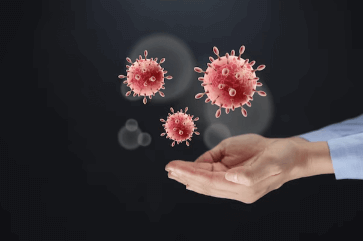Question
a.
3-4mg/ml
b.
4-6 mg/ml
c.
7-8 mg/ml
d.
1-2 mg/ml
Posted under Drug and Pharmaceutical Biotechnology
Interact with the Community - Share Your Thoughts
Uncertain About the Answer? Seek Clarification Here.
Understand the Explanation? Include it Here.
Q. What should be the ideal solubility rate of an orally administered drug in the pH range of 2 to 8?
Similar Questions
Explore Relevant Multiple Choice Questions (MCQs)
Q. Which one of these is not a theory of Drug dissolution?
View solution
Q. Which theory takes into account that a thin film is created by the solution of the solid at the solid-liquid interface?
View solution
Q. In the equation G=Ki (Cs-Cb), what does G stands for______________
View solution
Q. Which model does not approve the existence of the stagnant layer in the solid-liquid interface?
View solution
Q. What does the interfacial barrier model states?
View solution
Q. In the equation, Wo1/3-W1/3=Kt, K stands for ____________
View solution
Q. Which are the two rate-determining step of drug absorption when given orally?
View solution
Q. The maximum amount of solute dissolved in a given solvent under standard conditions of temperature, pressure, and pH is known as __________
View solution
Q. In the equation, V dC/dt = dm/dt = A(Cs-Cb).√ γ D, what does γ stands for?
View solution
Q. Each face of the crystal has a different interfacial barrier.
View solution
Q. Absorption of drugs can be categorized into 2 classes, physicochemical properties of drugs and Dosage form of the drug, on the basis of drug dissolution.
View solution
Q. Which option will be the best example of the physicochemical properties of drugs?
View solution
Q. For oral formulation, what should be the minimum aqueous solubility to avoid bioavailability problems?
View solution
Q. The total solid surface area of any particle is known as ___________
View solution
Q. Particle size and surface area of a drug are directly related to each other.
View solution
Q. Absolute surface area is proportional to the dissolution rate of a drug.
View solution
Q. In the case of hydrophobic drugs, micronization results in a decrease in effective surface area and thus fall is dissolution rate. Which of the below sentences cannot be a reason for the given statement?
View solution
Q. How the absolute surface area of hydrophobic drugs can be converted to their effective surface area?
View solution
Q. Which one of these is not an example of hydrophilic diluents?
View solution
Q. The solvate can exist in different crystalline forms called as _________
View solution
Recommended Subjects
Are you eager to expand your knowledge beyond Drug and Pharmaceutical Biotechnology? We've handpicked a range of related categories that you might find intriguing.
Click on the categories below to discover a wealth of MCQs and enrich your understanding of various subjects. Happy exploring!








